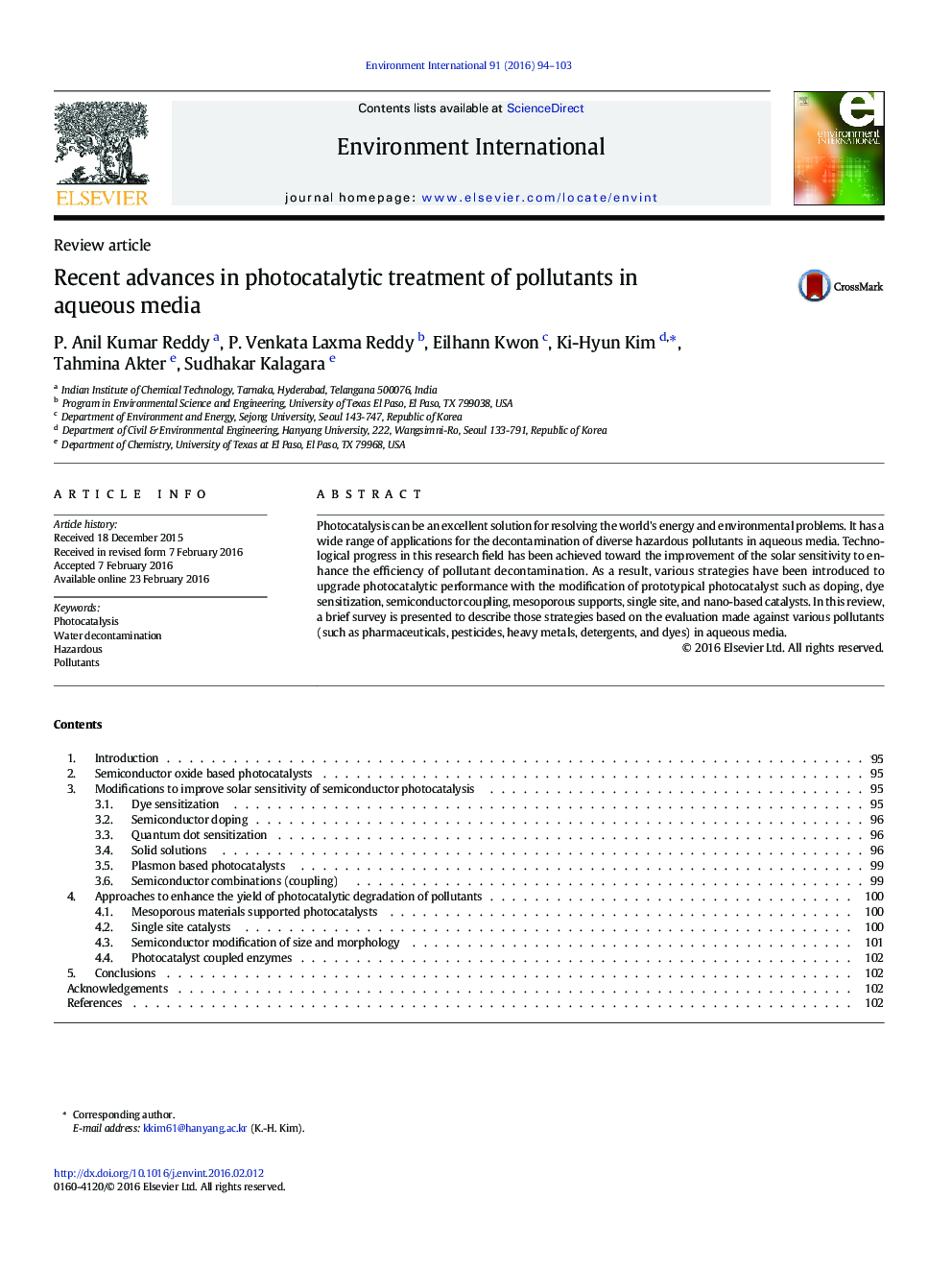| Article ID | Journal | Published Year | Pages | File Type |
|---|---|---|---|---|
| 6313193 | Environment International | 2016 | 10 Pages |
â¢Photocatalytic applications using TiO2 are used most extensively to treat pollutants.â¢Such application is favored due to their well-known efficiency and universal feasibility.â¢A review is provided to describe photocatalytic approaches for environmental applications.â¢To this end, performance of semiconductor photocatalysts is evaluated in many respects.
Photocatalysis can be an excellent solution for resolving the world's energy and environmental problems. It has a wide range of applications for the decontamination of diverse hazardous pollutants in aqueous media. Technological progress in this research field has been achieved toward the improvement of the solar sensitivity to enhance the efficiency of pollutant decontamination. As a result, various strategies have been introduced to upgrade photocatalytic performance with the modification of prototypical photocatalyst such as doping, dye sensitization, semiconductor coupling, mesoporous supports, single site, and nano-based catalysts. In this review, a brief survey is presented to describe those strategies based on the evaluation made against various pollutants (such as pharmaceuticals, pesticides, heavy metals, detergents, and dyes) in aqueous media.
